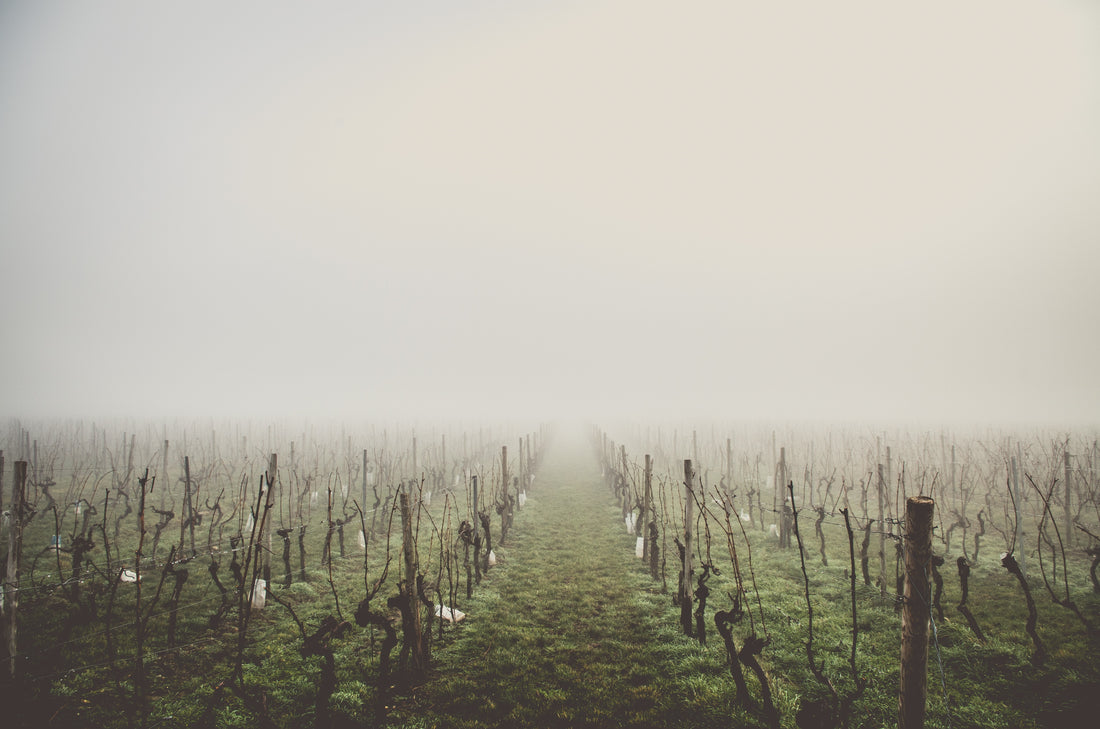By Rai Cornell

It’s the first thing that comes to mind when we need to make small talk. It can make or break your day. And it can do wonders (or cause woes) for your favorite adult beverage.
Weather.
While we’d love to give 100% of the credit to the masterful winemakers that make our world go ‘round, the weather that grape vines endure during their growth has a dramatic impact on the flavor their wine will take on.
So the next time you’re pondering global warming, climate shifts, and melting polar ice caps, think about those little grapes that are soaking in the sunshine and praying for rain.
Tomato, Tomahto – Weather, Climate
We use the terms interchangeably out here in the real world, but in the fairytale land of winemaking, weather and climate are very different things.
Weather is what happens outside your window on any given day. Some days it rains, some days it pours, some days it’s bright and sunny and delightful. Weather includes the daily temperature, humidity, and mood of the sky. Hail, thunderstorms, heat waves – these are all characteristics of “weather.”
Climate, on the other hand, is the long-term pattern of weather conditions around the world. While regions like Northern California may have the occasional thunder and hail storm, that’s not typical. Typical climate conditions for NorCal include warm and mild summers, cool and wet winters, and the occasional bout of drought.
In other words, if weather is a freeze frame, climate is the whole film reel.
It may seem like splitting hairs, but in the wine world, individual days of weird weather don’t matter so much. It’s the long-term climate that truly impacts the grapes.
Climate Sets the Stage
If you’ve ever wondered why Tempranillo and Mencia grapes are more predominant in Spain while central Italy produces a great deal of Trebbiano grapes, the reason is: Climate.
In particular, the temperature trends of a region are the dominating climate factor that affect grapes and, ultimately, the flavors of your favorite wines.
Most wine production happens in climates with average temperatures that hover between 54 and 72 degrees Fahrenheit. However, depending on whether a region tilts toward the cooler or warmer end of that spectrum, the resulting wine can have a wildly different experience on your palate.
On the Cool Side
Everyone’s different. While some people volunteer to live in places like Arizona and the Sahara, others would rather tough it out in the frigid north. Grapes are the same weirdos we are.
In the red wine family, grapes like Merlot, Pinot Noir, Pinot Gris, Rondo, and Cabernet Franc enjoy the cool weather. Likeminded white wine grapes include Riesling, Chasselas, and Sauvignon Blanc.
Cooler average temperatures translate into less sugar for fermentation and a lower alcohol content in the finished product. In turn, a lower alcohol content translates into a lighter-bodied wine with tart, bright, and crisp fruit flavors.
On the Warm Side
In a game of “Would You Rather,” grapes like Nebbiolo, Zinfandel, Sangiovese, and Cabernet Sauvignon would choose the heat over the cold. Of the white wines, Viognier is the only true stand out to prefer warmer temperatures.
Grapes that are partial to the warmer side of things tend to yield wines with a higher alcohol content and full-bodied flavors.
Why Worry About Weather?
While it’s the long-term climate that truly affects the flavors within each beautiful, budding grape, weather can make or break a harvest. In the winemaking world, nail-biting season arrives in the six weeks prior to harvest. During those weeks, heavy rain can cause a devastating bout of grape rot while an unseasonal frost can kill off grapes by the bushel.
Since the weather is notorious for not giving a you-know-what about what we humans have going on down here on the ground, vineyard owners are at the mercy of Mother Nature’s mood swings.
The Elephant in the Room
Climate change. We don’t want to risk upsetting Al Gore or Rush Limbaugh by commenting on whether or not we humans have had an influence on the earth’s climate, but the fact remains that climate does change over time. Just ask the dinosaurs.
As average temperatures change year after year, winemakers have to pay attention. No matter the cause, the fact remains that average temperatures around the globe have risen steadily over the past several decades. Sadly, even small changes in climate can lead to big consequences for wine growers and drinkers alike.
Because certain grapes perform better in cooler temperatures, regions that predominantly grow Merlot, Pinot Gris, Cabernet Franc, and other cool-loving grapes may not be able to do so in the future.
The obvious solution is for growers to change the varieties of grapes they plant and harvest to accommodate the changing climate in their region. However, wine devotees are loyal and some producers won’t even consider changing their grape varieties to suit climate shifts preferring instead to simply will the grapes to grow through sheer passion.
While climate change may do more harm than good, there is a silver lining. As temperatures rise around the world, land once incapable of supporting winemaking may become a new resource and offer exciting new flavors and experiences.
In fact, Nova Scotia, Washington’s Puget Sound, Michigan, and Sweden are just such regions that are beginning to be able to raise grapes and create beautiful, unique wines carrying all the special traits of their land.
To cope with the changes the earth throws our way, all we can recommend is to keep an open mind and drink more wine. As the most interesting man in the world says, “Stay thirsty, my friends.”
Have you found a new up-and-coming wine region recently? Tell us about it in the comments below!

